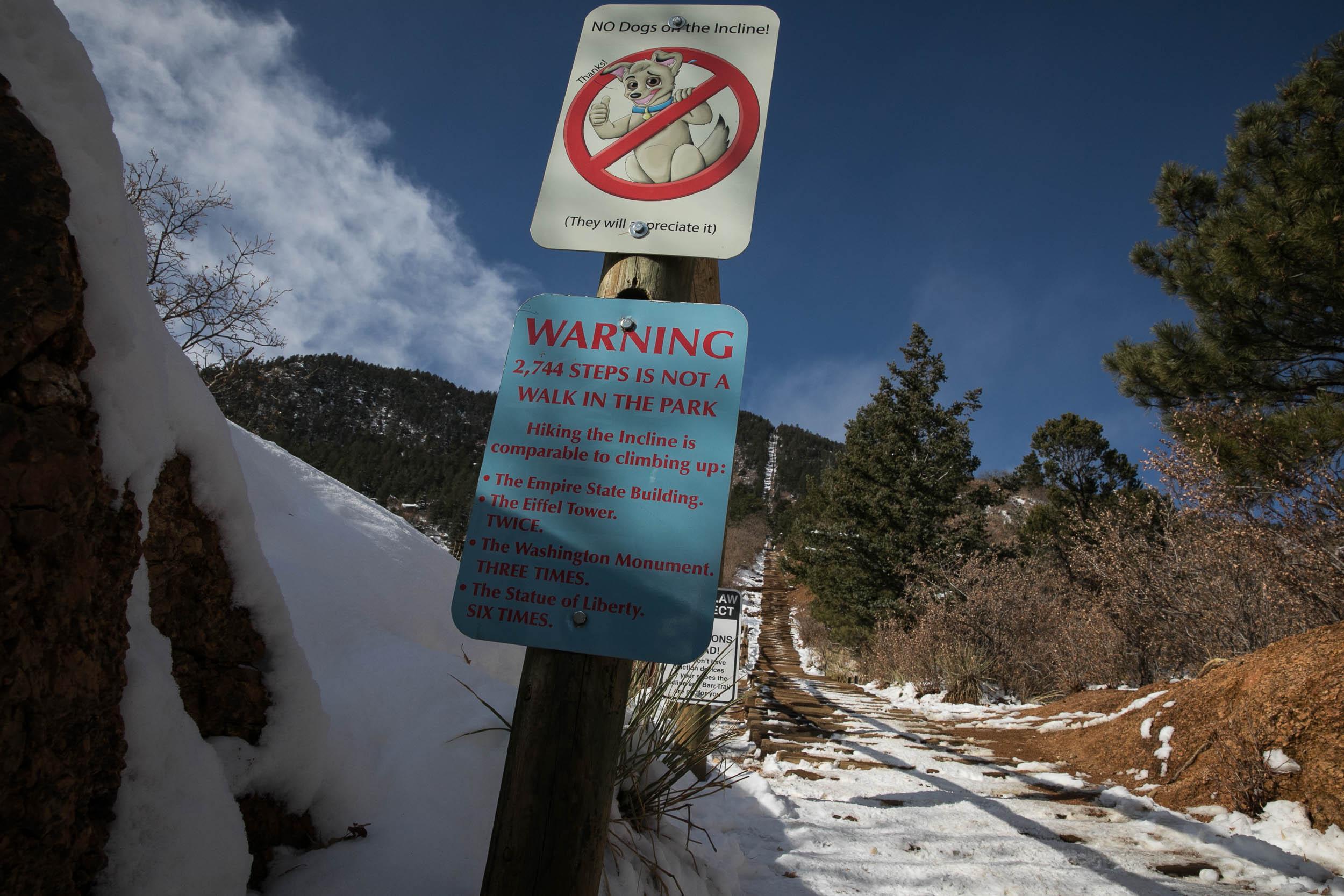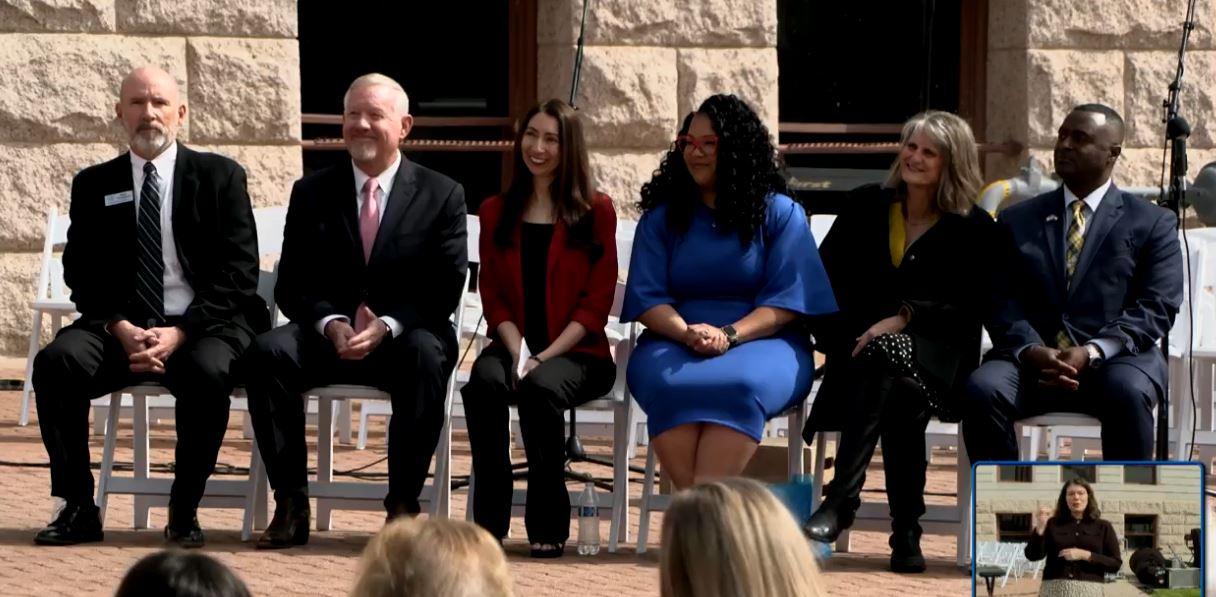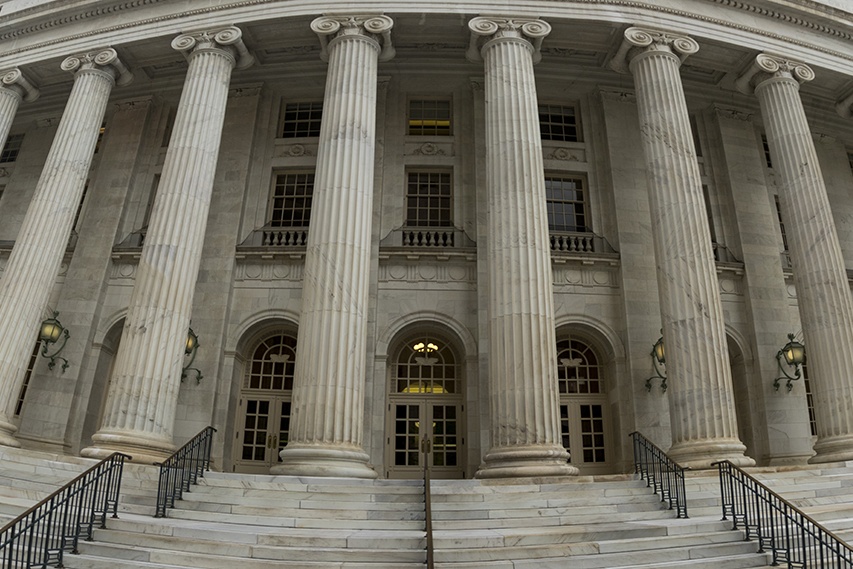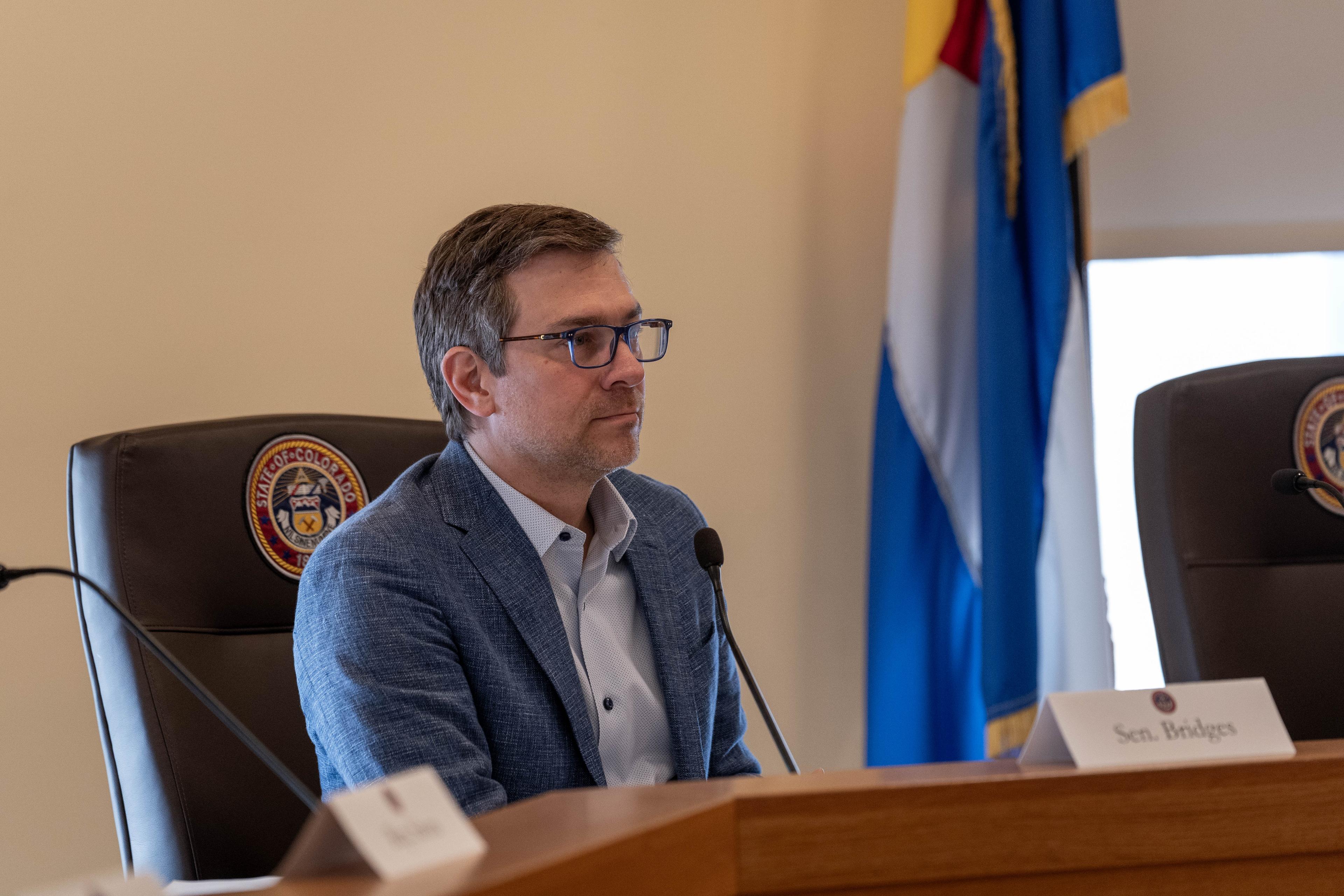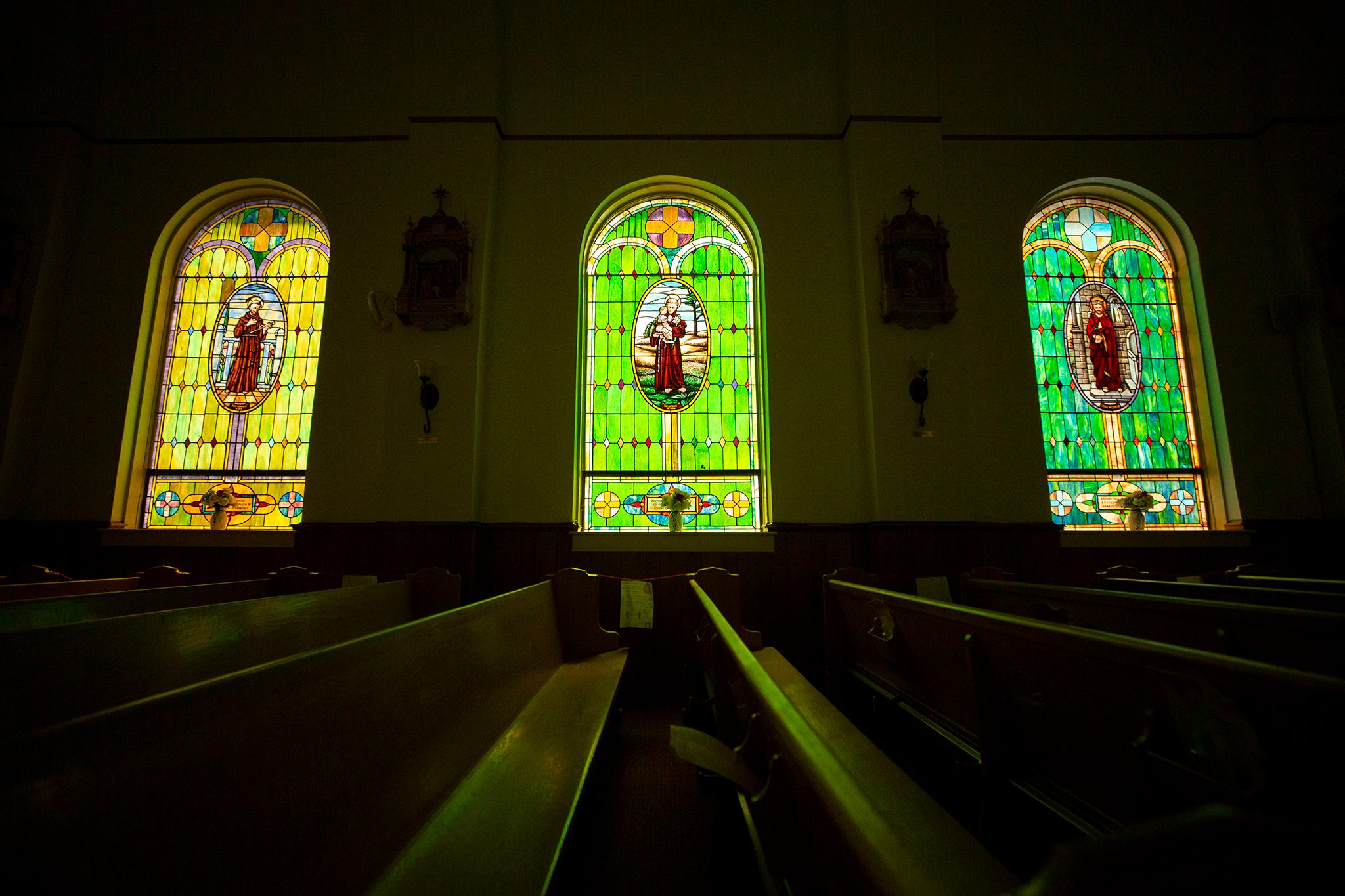
Bells mark the beginning of the Fiesta of the Lady of Guadalupe at the first parish established in Colorado. The historic Catholic church’s elaborate red and brown masonry walls are set against a backdrop of towering mountains and agricultural scenes in the rural community of Conejos.
It’s a place where holiday traditions have been passed down through families, according to lifelong parishioner and volunteer parish business manager Martha Abeyta.
“I'm 86 years old and I can only speak for part of those 86 that I can remember,” she said. “But as far as I know those traditions have been here for over a hundred years.”
It’s been nearly 170 years since settlers first arrived in the region, when one of their pack burros refused to leave.
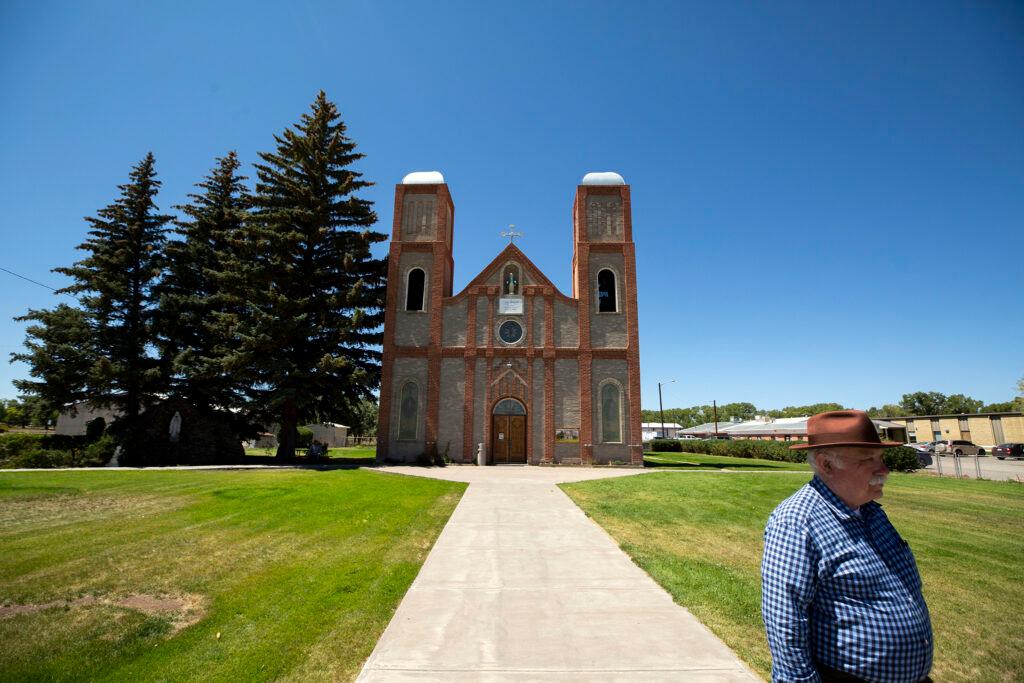
“They emptied his saddle bags and in it, they found a small statue of Our Lady of Guadalupe,” Abeyta said. “The travelers assumed or felt that the burro did not want to move because Our Lady of Guadalupe was sending a message that she wanted to stay where she was in that area. So they decided to build a church in her honor.”
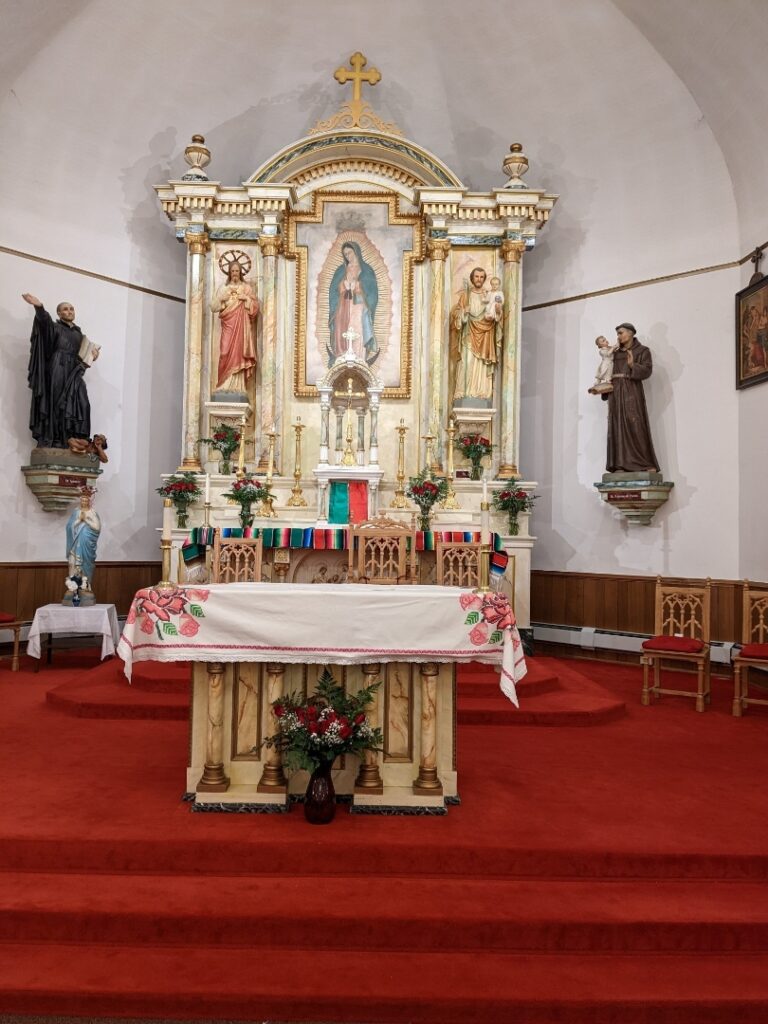
Each year in mid-December the parishioners celebrate the Lady of Guadalupe in many ways, including a procession, mariachi music and special meals. They also fill their church with roses.
“It's very beautiful,” Abeyta said. “Our church has a lot of color to it. It has gold, it has reds and silver. The roses enhance the colors of the church.”
Why roses? The Rev. Sergio Robles Cardenas said in 1531 the Virgin Mary or Lady of Guadalupe appeared to a man named Juan Diego in what is now Mexico. She asked for a shrine to be constructed there. But the local bishop didn’t believe his story.
“Juan Diego was telling her, ‘The bishop doesn't believe me,’” Cardenas said. “He wants proof that you are real. So our Lady of Guadalupe (tells) him to go to the hill of Tepeyac and you're going to find some roses over there.”
Roses blooming in winter—Juan Diego took the miraculous flowers to the bishop wrapped in his tilma, or cloak. When the tilma was opened, they saw it was imprinted with an image of the lady.
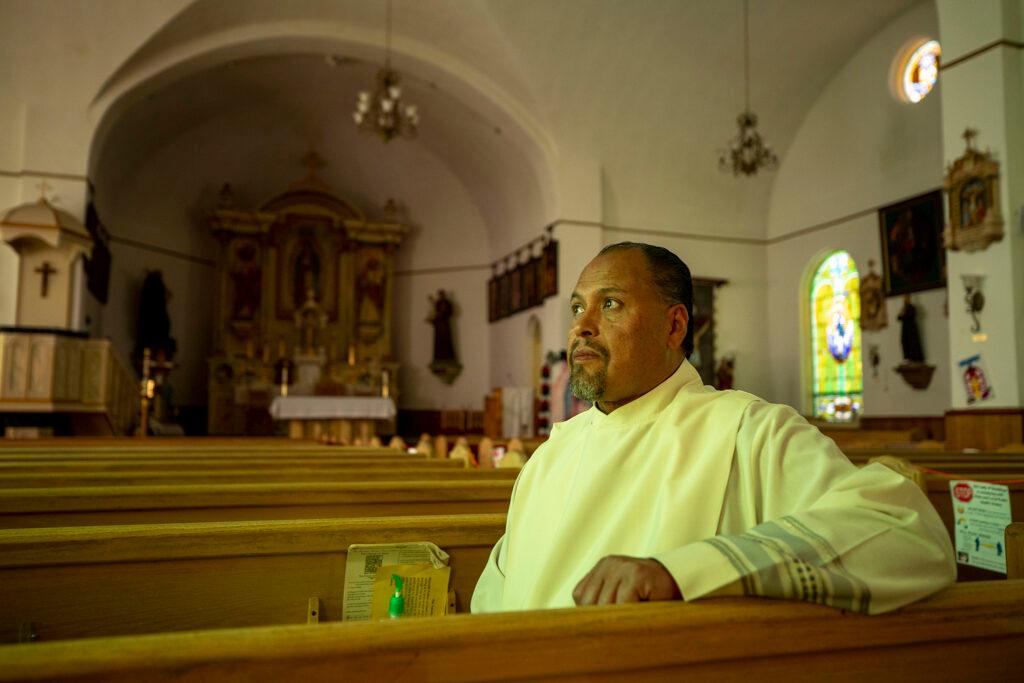
And so in the 21st century vases filled with roses surround the altar in Conejos during the fiesta. Father Robles said it's important to maintain these kinds of traditions.
“If we lose our traditions, we are losing our culture,” he said. “If we are losing our culture we are losing our identity. So culture and traditions give us our own identity.”
Mass and services are conducted in both Spanish and English and during the fiesta there are mariachis playing guitars and singing.
Abeyta says the younger generations like and honor the traditions, but they aren’t very involved and it’s getting harder for the older folks to participate.
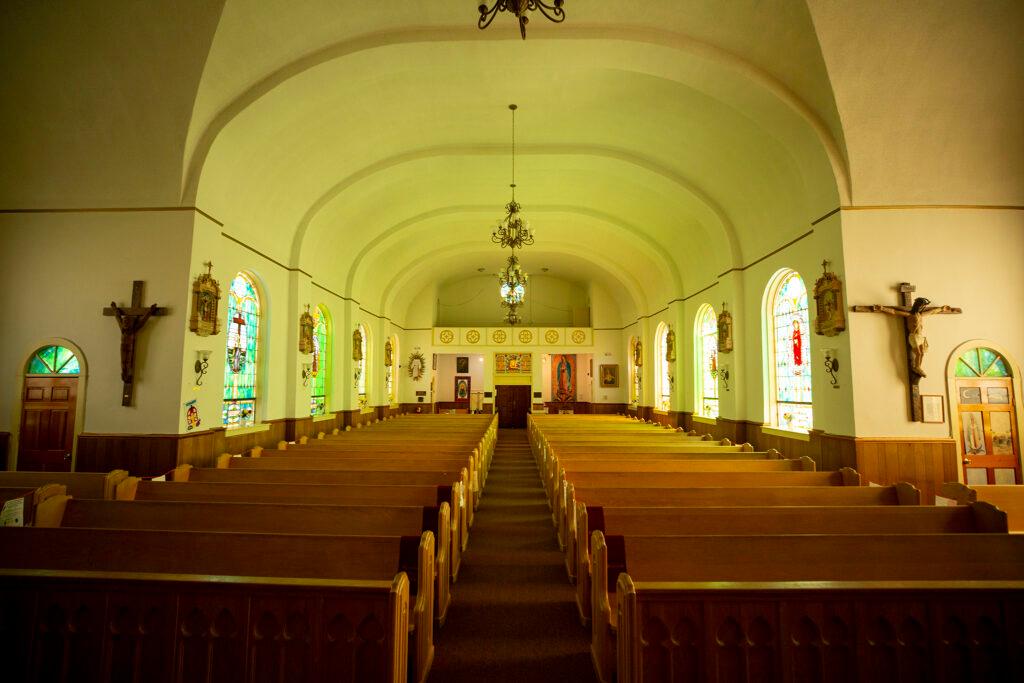
“I wish that I could tell you that our fiestas are as I remember them back many years ago with people gathering together and sharing those traditions,” she said.
There are more than four hundred congregants listed on the church's roles, according to Abeyta, and although many aren't active, everyone is welcome to join the celebration and enjoy the good food shared at the church during the fiesta too like Frito Pie, burritos, tamales, pozole, menudo, and ice cream floats for the kids and margaritas for adults.
The celebration of the Lady of Guadalupe is this weekend in Conejos, Dec. 8-10.
Meanwhile, there’s a new tradition in the making there. During the last few years, the parishioners have built a sacred labyrinth on the church grounds using traditional adobe bricks. They hope to open this new place of prayer in the spring.
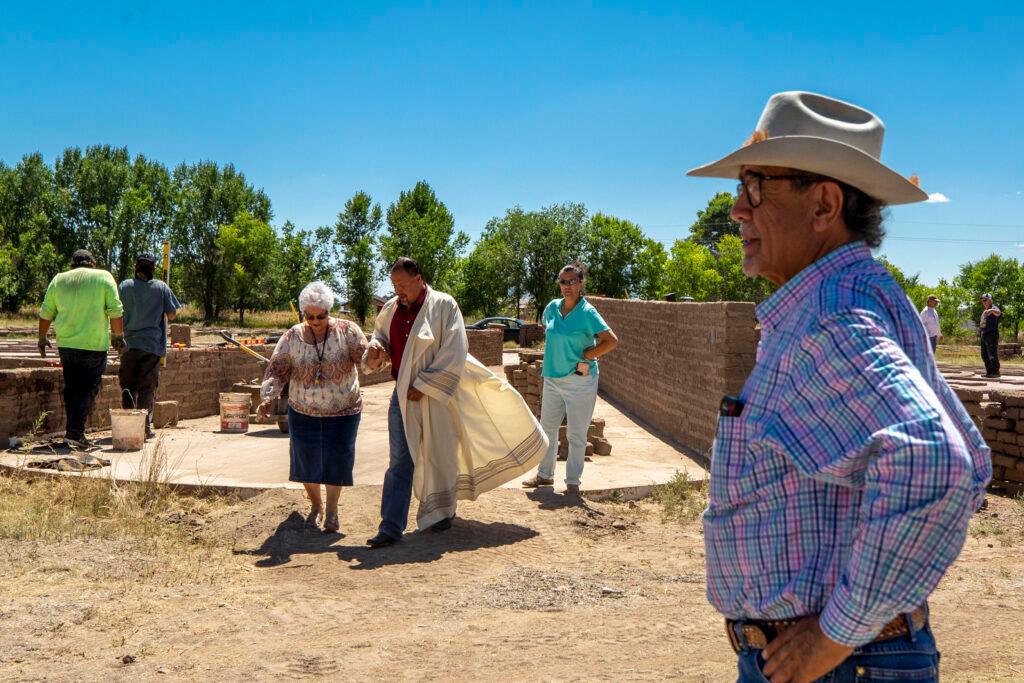
More stories from the San Luis Valley
In the San Luis Valley, artisans paint pictures of everyday life using colcha embroidery
Volunteers are working to get an 18-foot-tall antique street clock in Alamosa ticking again

